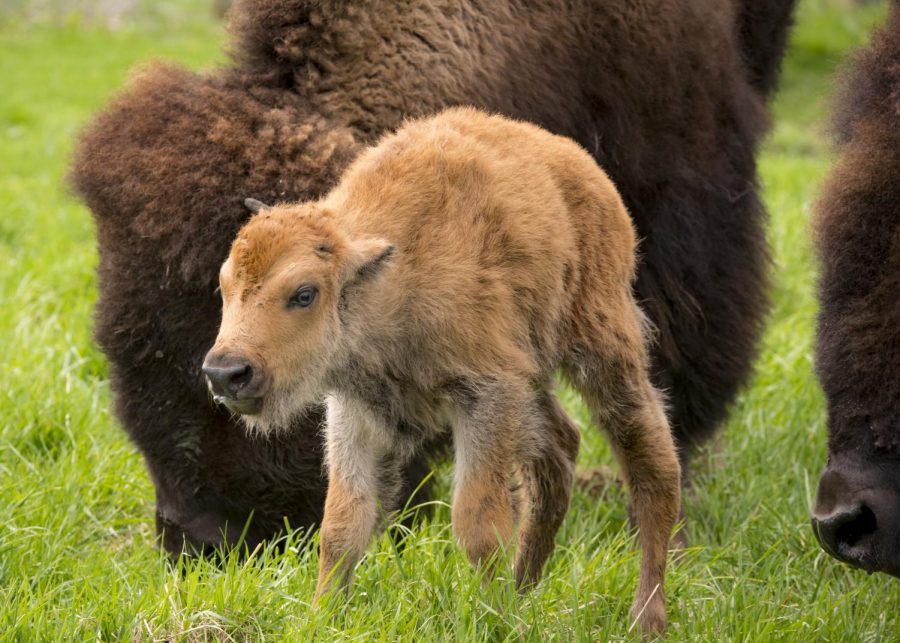Roaming free: baby bison to join Fermilab family
Baby bison are expected to be born at Fermilab in Batavia, Illinios, during April and May.
May 1, 2017
Bison will soon roam 2,000 acres of restored Illinois prairie at Fermilab in Batavia, Illinois, just as they did on the Pre-Columbian Great Plains.
About 14 bison calves, raised at Fermilab for environmental reasons rather than research purposes, are expected to be born at the suburban laboratory during the end of April and early May.
“People [will] come just to see the bison, and while they’re here, we try and get them interested in science,” said Andre Salles, the lab’s media relations coordinator.
Fermilab is one of 17 national laboratories funded by the U.S. Department of Energy specializing in the study of particles, researching how atoms make up the universe. Fifty years ago, Fermilab’s founding Director Robert Wilson designed the lab with his home state of Wyoming in mind.
“[He designed the site] as a metaphor for the frontier, with the scientists on the frontier of research,” Salles said. “Bison are animals [of the Great Plains], so he brought a herd of bison onto the site.”
This birthing is a renewal of the bison population, adding another generation to the herd, said Travis Livieri, wildlife biologist at Prairie Wildlife Research in Wellington, Colorado. He said bison are an interesting species because they have a social structure and society.
The bison herd social structure is complex, with the relations between the calves, mothers and older bison changing depending on the season, according to the Prairie Wildlife Research website. In spring, calves are weaned from maternal care and temporary groupings among the young bison form.
Herdsman Cleofas Garcia, who has been handling bison at Fermilab for 10 years, said like many bison farms, Fermilab’s 15 current bison are free to roam around the prairie and are treated largely like wild animals, he added.
“We try not to handle them too much, so if they need to go into wild survival, they can take care of themselves,” Garcia said. “Even though we have them fenced in, they can roam in the grass.”
Keeping the bison in this free-range setting is beneficial to the prairie ecosystem, Livieri said. The bison stampeding the land and rolling around in the dust creates a specific type of micro-ecosystem for other creatures such a prairie dogs, hawks and special insects.
“Bison—large grazing herbivore—could be considered an ecosystsem engineer,” Livieri said.
Bison in North America fall into two classifications: livestock and wild animals, Livieri said. The majority are livestock, which most people ranch for profit. Others live freely in places such as Wyoming’s Yellowstone National Park.
“The idea to some people of wild, free-range bison is something in their minds that should only exist in a national park,” Livieri said. “There are fewer conservation bison just because there are fewer places that allow bison just to exist.”








